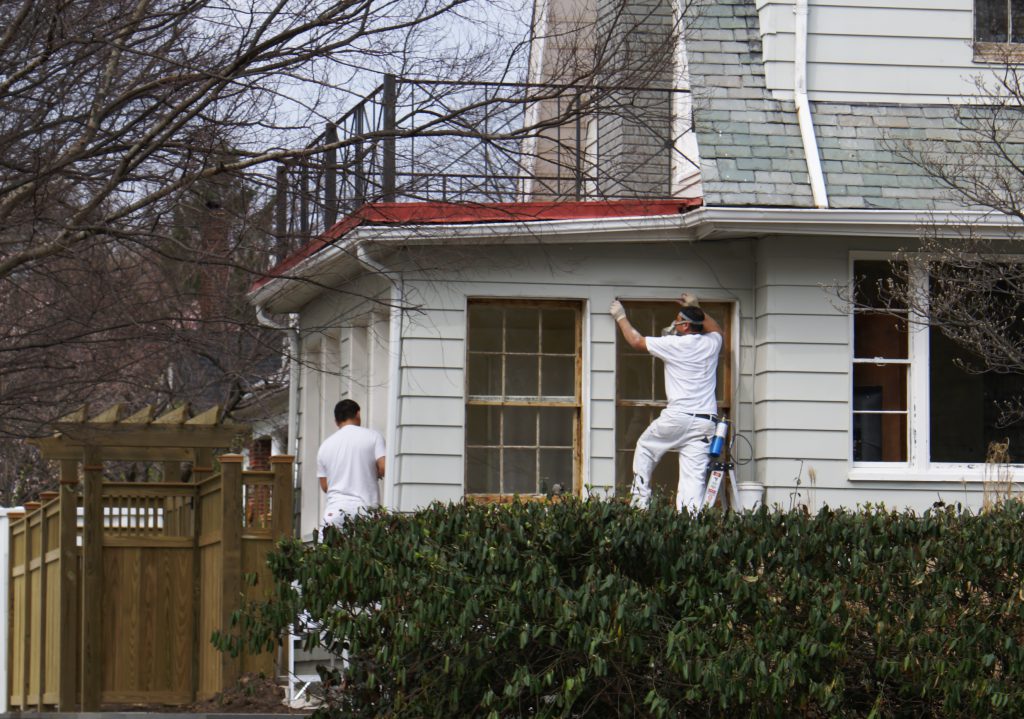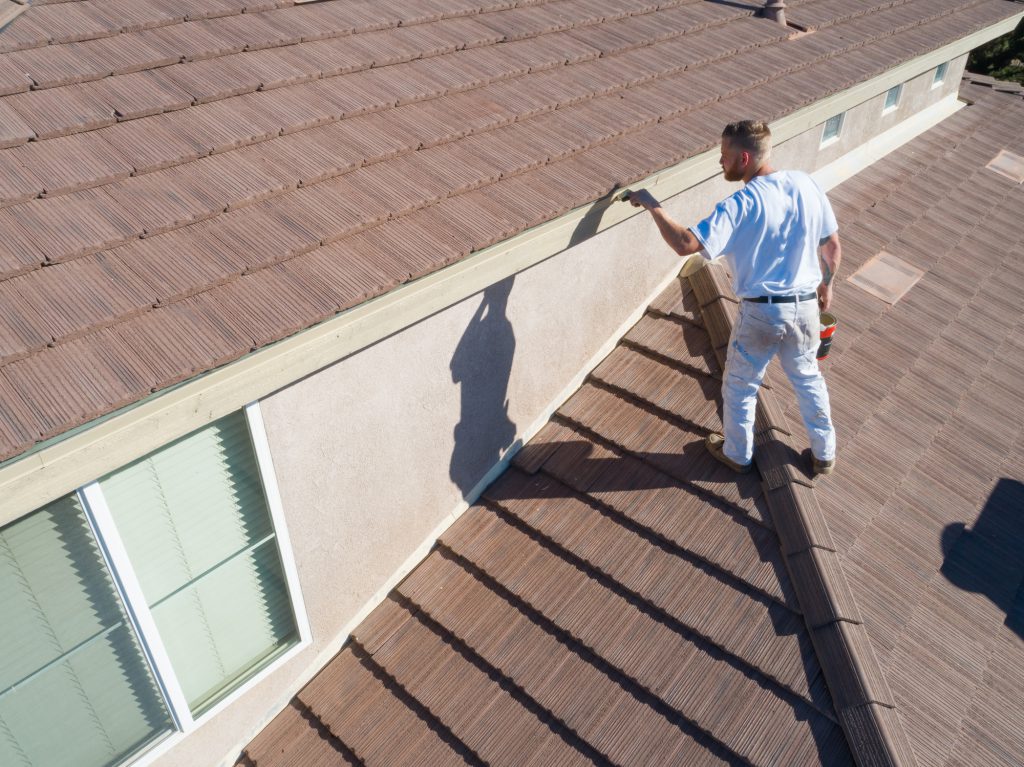Choosing the right paint sheen for your exterior isn’t just about personal preference or style—it’s about performance, protection, and long-term maintenance. The wrong choice can lead to premature chalking, peeling, or surface wear, especially on sun-exposed or moisture-prone surfaces.
In technical terms, paint sheen refers to the gloss level or light reflectance of a dried paint film. But its impact goes beyond shine. A flat finish may help hide imperfections, but it absorbs moisture and dirt more easily. Satin finishes provide balanced durability and subtle reflectivity. Semi-gloss coatings are the most durable and cleanable but can exaggerate flaws in surface prep.
This guide dives deep into the science and service considerations behind exterior sheens. You’ll learn:
-
How paint sheen is chemically and visually defined
-
How different sheens perform on common exterior substrates
-
Which climates demand which sheens
-
Real-world product examples and manufacturer data
-
Common mistakes to avoid
What Is Paint Sheen, Technically?

Painters preparing a house to be painted
How Sheen Is Measured
Paint sheen is measured using a gloss meter that quantifies how much light bounces off a painted surface at a specific angle (commonly 60° or 85°). Measured in gloss units (GU):
| Sheen Level | Gloss Units (GU) | Appearance |
|---|---|---|
| Flat | <10 GU | Matte/no reflection |
| Satin | 25–35 GU | Low sheen/subtle glow |
| Semi-gloss | 40–70+ GU | Noticeable shine |
The Chemistry Behind Sheen
Paint sheen level is dictated by the resin-to-pigment ratio in the paint. More resin means a smoother surface and more light reflection. Flat paints use matting agents and higher pigment volume concentration (PVC) to scatter light, reducing shine.
-
High gloss = more resin, less pigment
-
Low gloss = more pigment, less resin
Sheen and Performance
Sheen affects the following characteristics:
-
Durability (harder films resist weather and abrasion)
-
Washability (higher sheen resists dirt and stains)
-
Moisture resistance
-
UV reflectivity
-
Visual perception of flaws
Overview of Common Exterior Paint Sheens
Flat (Matte) Finish
Light reflection: Minimal.
Performance: Best for hiding imperfections. Flat paint minimizes the appearance of stucco lines, patched areas, or uneven surfaces.
Strengths:
-
Hides defects effectively
-
Best for old or textured masonry surfaces
Weaknesses:
-
Low washability
-
Susceptible to chalking and mildew
-
Less UV- and water-resistant
Use cases:
-
Large stucco or brick façades
-
Homes in dry, shady climates
Example products:
-
Sherwin-Williams A-100® Exterior Flat
-
BEHR Premium Plus® Flat Exterior
Satin (Low-Lustre or Eggshell)
Light reflection: Moderate, subtle sheen.
Performance: Provides the most balanced solution for most homes.
Strengths:
-
Resists mildew and dirt better than flat
-
Easier to clean
-
Holds up to moisture and moderate sun
Weaknesses:
-
May highlight slight surface flaws
-
Not suitable for rough or highly irregular textures
Use cases:
-
Lap siding, fiber cement, wood panels
Example products:
-
Benjamin Moore Regal Select® Low Lustre
-
Sherwin-Williams Duration® Satin
-
BEHR Ultra® Satin Enamel
Semi-Gloss Finish
Light reflection: High
Performance: Highest durability and washability, but makes surface imperfections visible.
Strengths:
-
Ideal for moisture-prone areas (gutters, trim)
-
Resists dirt and mildew
-
Easy to clean
Weaknesses:
-
Shows cracks, dents, and roller/brush marks
-
Difficult to touch up
Use cases:
-
Exterior trim, doors, shutters, fascia boards
Example products:
-
PPG Permanizer® Semi-Gloss
-
Sherwin-Williams SuperPaint® Semi-Gloss
How Paint Sheen Affects Performance on Different Surfaces

Professional Painter Using A Brush to Paint House Fascia.
Different substrates react to sheen differently. Surface texture, porosity, and expansion behavior all affect the ideal sheen choice.
| Substrate | Best Sheen | Reasoning |
|---|---|---|
| Stucco | Flat or Satin | Flat hides texture flaws; satin adds durability without amplifying imperfections |
| Wood Siding | Satin | Provides moisture resistance and flexibility; flat can trap moisture |
| Fiber Cement | Satin | Recommended by most fiber cement manufacturers for balance and ease of maintenance |
| Brick | Flat or Mineral Paint | Breathability is key; semi-gloss may trap moisture |
| Trim & Gutters | Semi-Gloss | Highlights architectural features and resists water and mildew |
Climate-Specific Sheen Considerations
Hot and Sunny Climates
-
Challenge: UV radiation causes chalking and pigment breakdown.
-
Solution: Use semi-gloss on trim, satin on siding.
-
Flat chalks and fades faster without UV stabilizers.
Humid and Rainy Zones
-
Challenge: Moisture, mold, mildew.
-
Solution: Satin or semi-gloss for better moisture resistance.
-
Flat finishes retain water and mildew more easily.
Cold and Snowy Climates
-
Challenge: Freeze–thaw cycles and snow buildup.
-
Solution: Satin offers flexibility and cleans easier after winter grime.
-
Semi-gloss works well on lower trim in contact with snow or de-icing chemicals.
Coastal Regions
-
Challenge: Salt spray, humidity, and wind-driven rain.
-
Solution: Semi-gloss on trim and shutters; satin on main body for washability and moisture resistance.
Paint Sheen and Longevity: What the Data Says
In general, higher-sheen paints last longer than flat finishes, particularly in challenging environments.
| Sheen | Repaint Cycle | Typical Degradation |
|---|---|---|
| Flat | 5–7 years | Fading, chalking, mildew |
| Satin | 8–10 years | Minor gloss loss, better wash resistance |
| Semi-Gloss | 10–12 years | Best moisture resistance, hardest film |
Study example:
Tests conducted on painted cedar siding in Florida’s hot, humid climate showed:
-
Flat paint required touch-ups by year 5
-
Satin lasted up to 9 years with only light wear
-
Semi-gloss on trim held up with minimal fading past 10 years
Service-Specific Recommendations for Sheen Selection
Professional painters don’t guess which sheen to use—they assess key factors like:
-
Surface condition: Any patches, cracks, or previous coating issues
-
Exposure: South-facing walls vs. shaded eaves
-
Substrate porosity: More porous surfaces require more protective films
-
Climate: Heat, humidity, UV, freeze-thaw cycles
Custom Sheen Layering
In some jobs, we combine sheens strategically:
-
Flat primer + satin topcoat: Hides flaws while enhancing durability
-
Satin siding + semi-gloss trim: Practical and visually striking
Our premium services include:
-
TDS-based sheen matching
-
Real-light paint samples for accurate selection
-
Sheen consistency across substrates (masonry, siding, trim)
Common Mistakes When Choosing Exterior Sheen
Choosing the wrong sheen can undermine even the highest-quality paint job. Common errors include:
-
Using flat in high-moisture zones → leads to mold, chalking, and maintenance headaches
-
Applying semi-gloss to unprepped stucco → highlights every defect
-
Ignoring manufacturer sheen recommendations for fiber cement or wood
-
Mixing sheens randomly → causes inconsistent finish or durability
-
Choosing based on appearance alone instead of performance factors
People Also Ask

Q1: Which paint sheen is best for exterior walls?
A: Satin is the most balanced and widely recommended sheen for exterior walls. It offers strong durability, mild reflectivity, and easy cleaning. It also works well on fiber cement, wood, and composite sidings. Flat finishes are limited to specific use cases, such as textured stucco in dry climates.
Q2: Does paint sheen affect durability?
A: Absolutely. Higher sheens like satin and semi-gloss contain more resin, forming a tougher, more water-resistant film. Flat paints, with less binder, are more prone to chalking, UV damage, and moisture absorption.
Q3: Can I mix sheens on the same exterior?
A: Yes—and it’s often preferred. Most professionals use satin on the siding and semi-gloss on trim, doors, and shutters. This improves both performance and visual contrast.
Q4: Why does my exterior flat paint look chalky after a few years?
A: Chalking occurs when UV rays degrade the paint’s binder, especially in flat paints with low resin content. It’s more common in hot, sunny regions or when cheaper, unstabilized paints are used.
Conclusion
Paint sheen is more than just shine—it’s a performance spec. The right paint sheen affects your building’s ability to resist dirt, moisture, UV rays, and temperature swings. It can also save you from frequent repainting or patching.
-
Flat finishes work for aesthetics and coverage on textured masonry.
-
Satin is the most versatile and appropriate for most sidings.
-
Semi-gloss is best for trim, fascia, and high-contact areas.
Contact Despres Painting for a free exterior paint consultation and substrate assessment. We’ll guide you toward the best paint sheen system based on your surface conditions, regional climate, and visual goals—backed by years of coating system performance data and professional-grade application.

